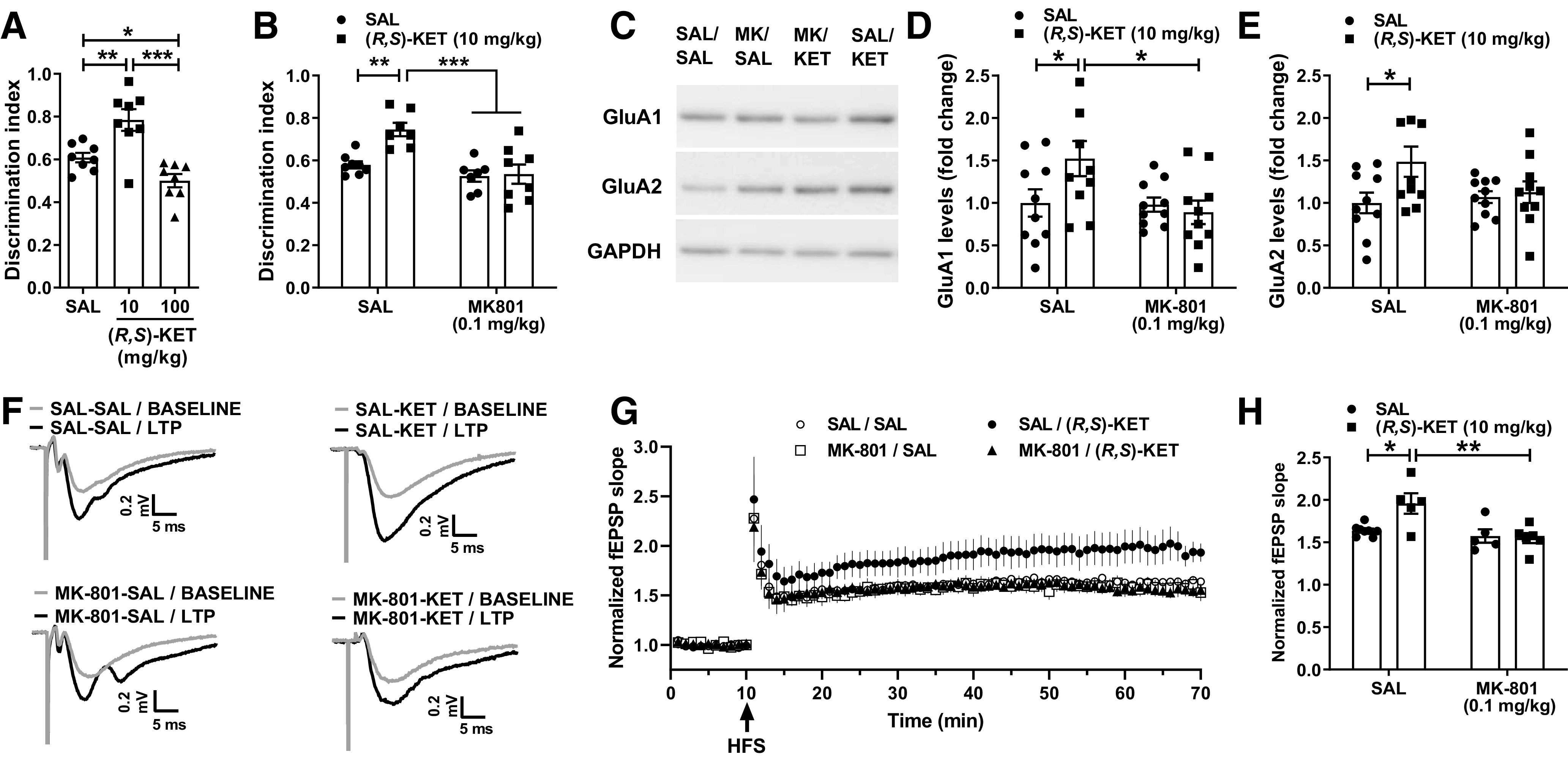Figure 4.

Blocking NMDAR activity prevents the procognitive and synaptic actions of ketamine. A, Mice received an injection of vehicle or different doses of racemic ketamine and were tested for short-term novel object recognition memory 24 h after drug administration. Ketamine (10 mg/kg) enhanced the discrimination index, indicative of a procognitive effect, whereas a higher dose of ketamine (100 mg/kg) impaired object recognition memory. B, Administration of the NMDAR channel blocker MK-801 (0.1 mg/kg) 10 min before ketamine (10 mg/kg) prevented the procognitive effect of ketamine in the novel object recognition test. C, Representative western blot images for GluA1 and GluA2 AMPAR subunits from hippocampal synaptoneurosomes. D, E, Pretreatment with MK-801 prevented the ketamine-induced enhancement of synaptoneurosomal levels of GluA1 and GluA2 AMPAR subunits. F, Traces composed of representative sweeps from 5 min pre-tetanus (gray) and 56–60 min post-tetanus (black) from SAL-SAL, SAL-KET, MK-801-SAL, and MK-801-KET treatment groups. G, H, Pretreatment with MK-801 prevented the metaplastic effect of ketamine on long-term potentiation magnitude at the SC-CA1 synapse. Data are the mean ± SEM; *p < 0.05, **p < 0.01, ***p < 0.001 as indicated by Holm–Šídák post hoc comparisons. See Table 1 for complete details on the statistical analyses and precise group sizes. HFS, high-frequency stimulation; KET, racemic ketamine; LTP, long-term potentiation; MK, MK-801; SAL, saline.
